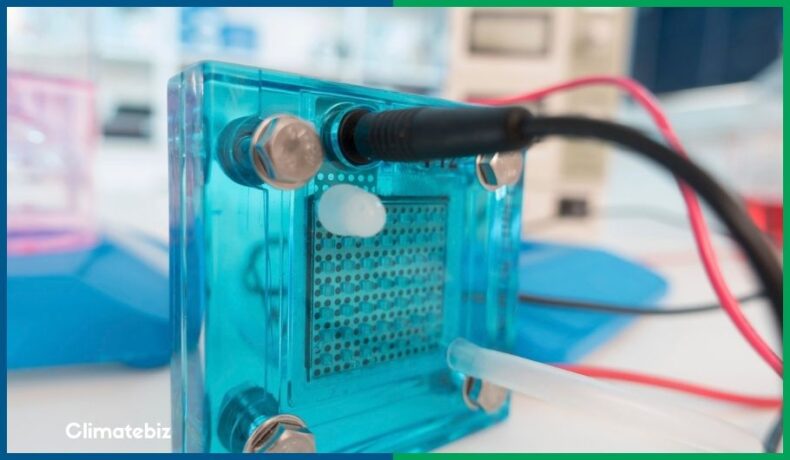
Building a DIY hydrogen fuel cell is a great way to familiarize yourself with the technology that might replace fossil fuels in the near future.
Fuel cells and hydrogen have many advantages:
- Stores a lot of energy —1lb contains 15kWh vs. 5.5kWh for petrol;
- Most abundant element in the universe;
- Efficient (60% fuel cell efficiency vs. 30% for combustion engine);
- Clean — only generates water and heat.
For these reasons, hydrogen is an excellent alternative to the current fossil fuel economy. Although many technical issues, such as clean hydrogen production and storage, still have to be solved. Nevertheless, hydrogen fuel cell technology is already working and spreading around the world.
In this article, we teach you how to build a DIY hydrogen fuel cell without chemicals or toxic material. Moreover, we explain how a fuel cell works and the essential parts you’ll require for the build.
Finally, we discuss what you can power with this cell and share our tips to improve your DIY hydrogen fuel cell further.
Affiliate Disclaimer
Table of Contents
What Do You Need To Build A DIY Hydrogen Fuel Cell?
Fuel cells are modular devices. They can virtually power anything, from the smallest electronic gadget (a few watts for a mobile phone) to the largest backup generator (+500kW).
In this article, we discuss building a customizable, low-power, air-cooled fuel cell with a maximum power of 14W.
The overall cost of this fuel cell (excluding the hydrogen canister) is $1,092.
Here is a list of the equipment and materials needed to build a PEMFC (Proton Exchange Membrane Fuel Cell):
| Component Image | Component Name | Description | Product Link |
|---|---|---|---|
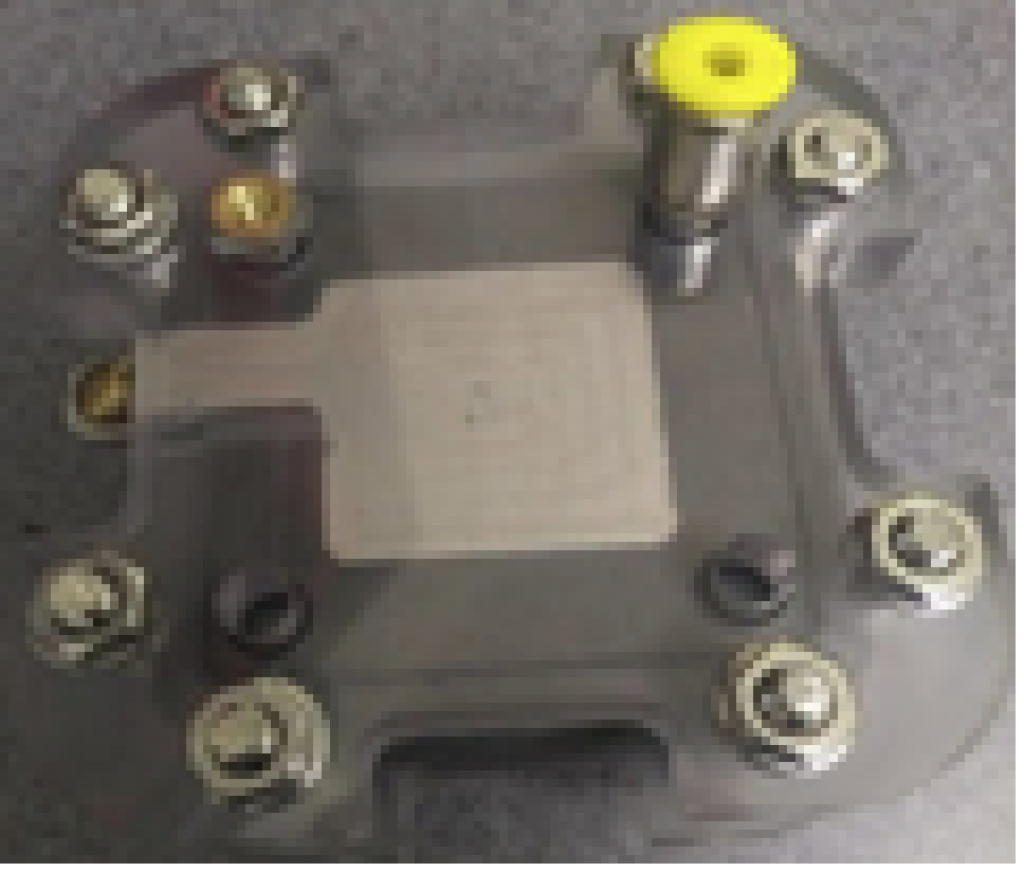 | End Plates WIth Current Collectors | Hold the cells together. Ensure sealing and uniform pressure distribution. With gas inlet and water outlet. | View Product |
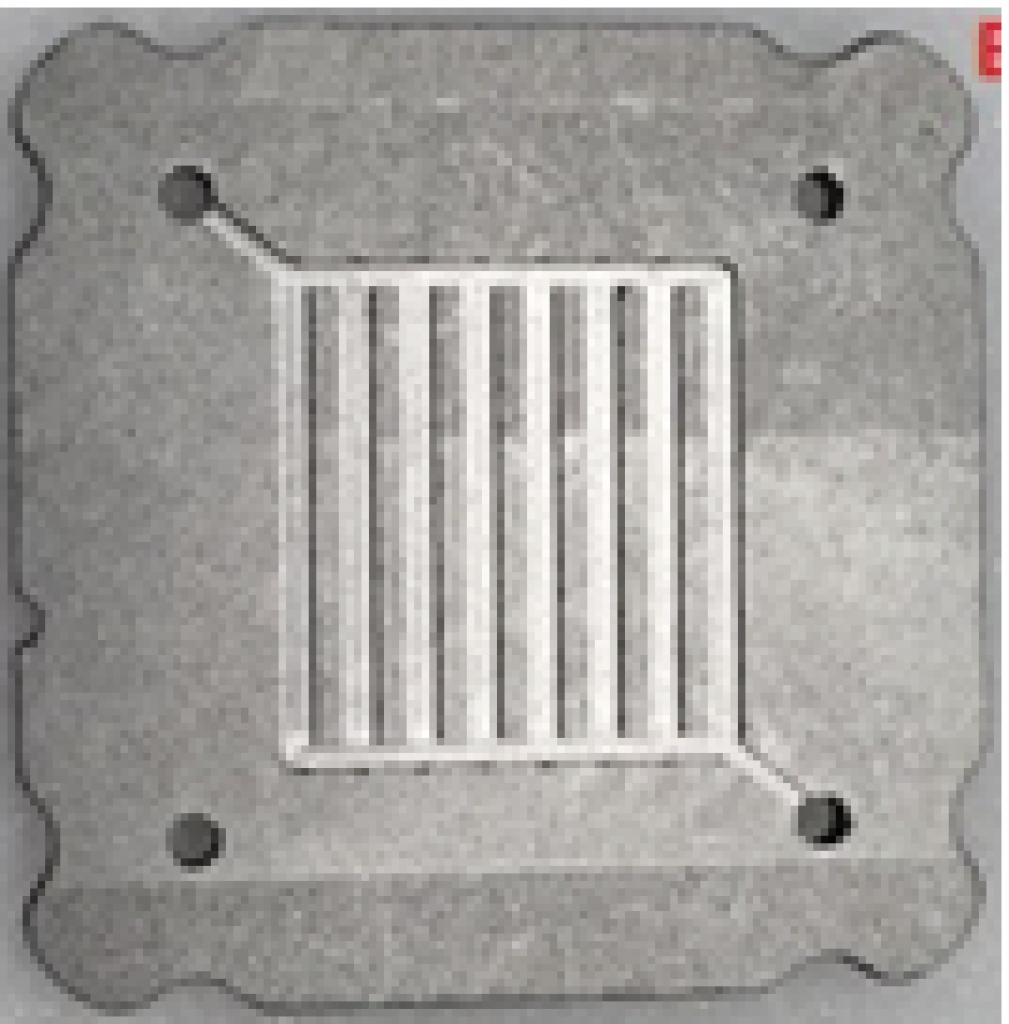 | Bipolar Plates With Flow Field | Ensure electrical conduction between cells. Provide physical strength to the stack. Improve cooling and gas diffusion with the flow field. | View Product |
 | Threaded Rods | Keeps the cells together. | View Product |
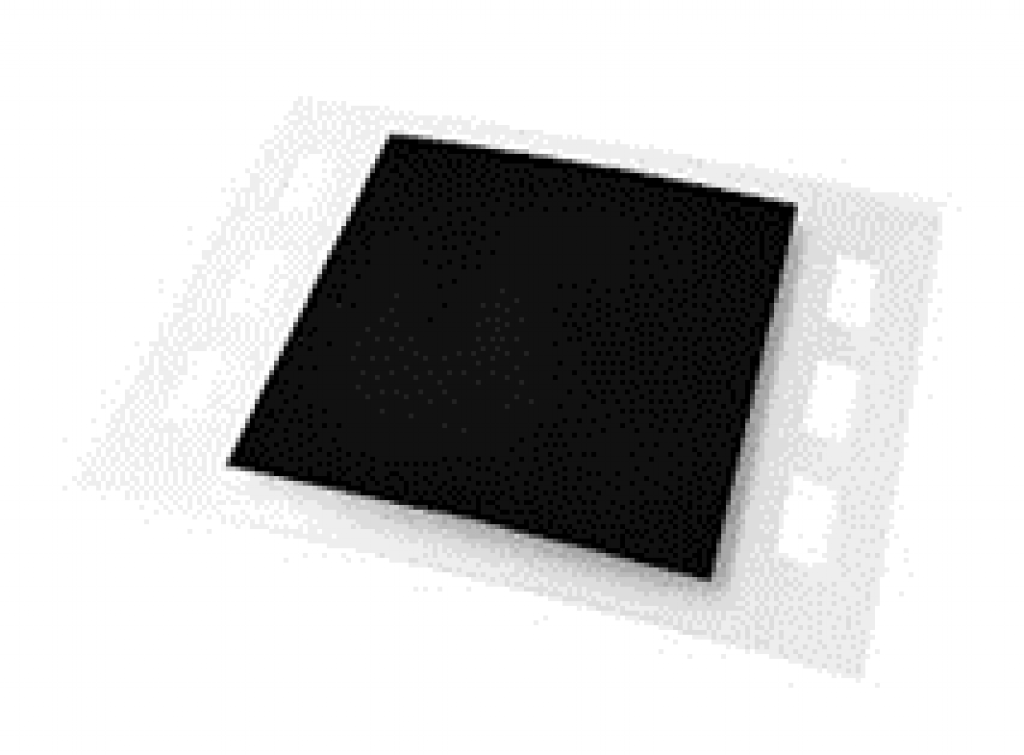 | Membrane-Electrode Assembly (MEA) | Heart of the fuel cell. Loaded with Pt catalyst. Customizable. | View Product |
 | Gasket | For compression. Avoid fuel leaks. Maximize efficiency. | View Product |
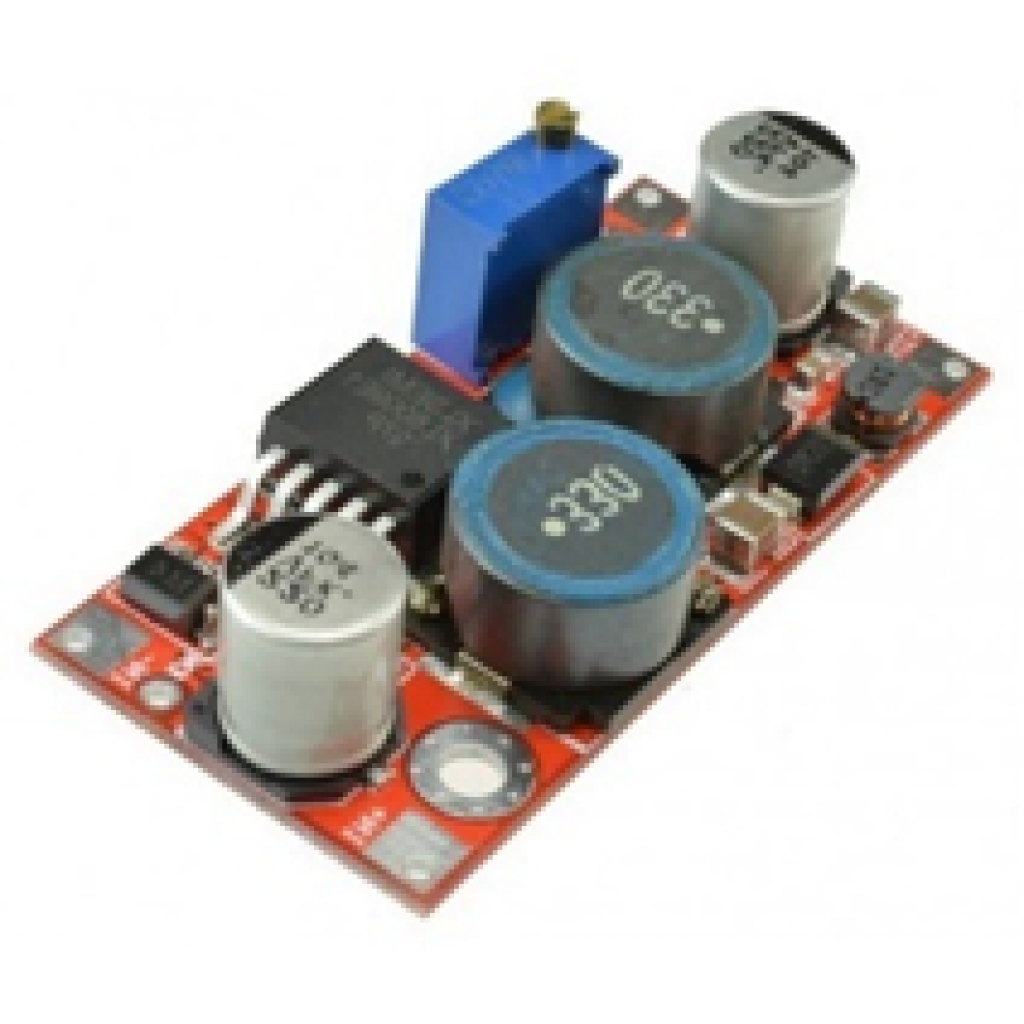 | DC Converter | Stabilizes the output voltage to 12V. | View Product |
 | PVC Tubing | For H2 supply. | View Product |
 | Hydrogen Canister | Casing, | View Product |
Additionally, you’ll require the following tools:
- Flathead screwdriver 1/4in
- Torque wrench (<50 in-lb, 1/4-inch nut)
Please note: for a first build, we recommend purchasing a kit like the Flex Stack Assembles. This kit includes all the listed material (except the hydrogen canister).
How To Build A DIY Hydrogen Fuel Cell
This DIY hydrogen fuel cell will have the following specifications:
| Number of cells in the stack | 20 |
| Nominal Power Output | Up to 14W |
| Nominal Operating Voltage | 9.5V to 12V |
| Hydrogen Consumption (cc/minute) | 400 |
| Dimension | 5.9*3.15*3.15in (15*8*8cm) |
Here is the building plan:
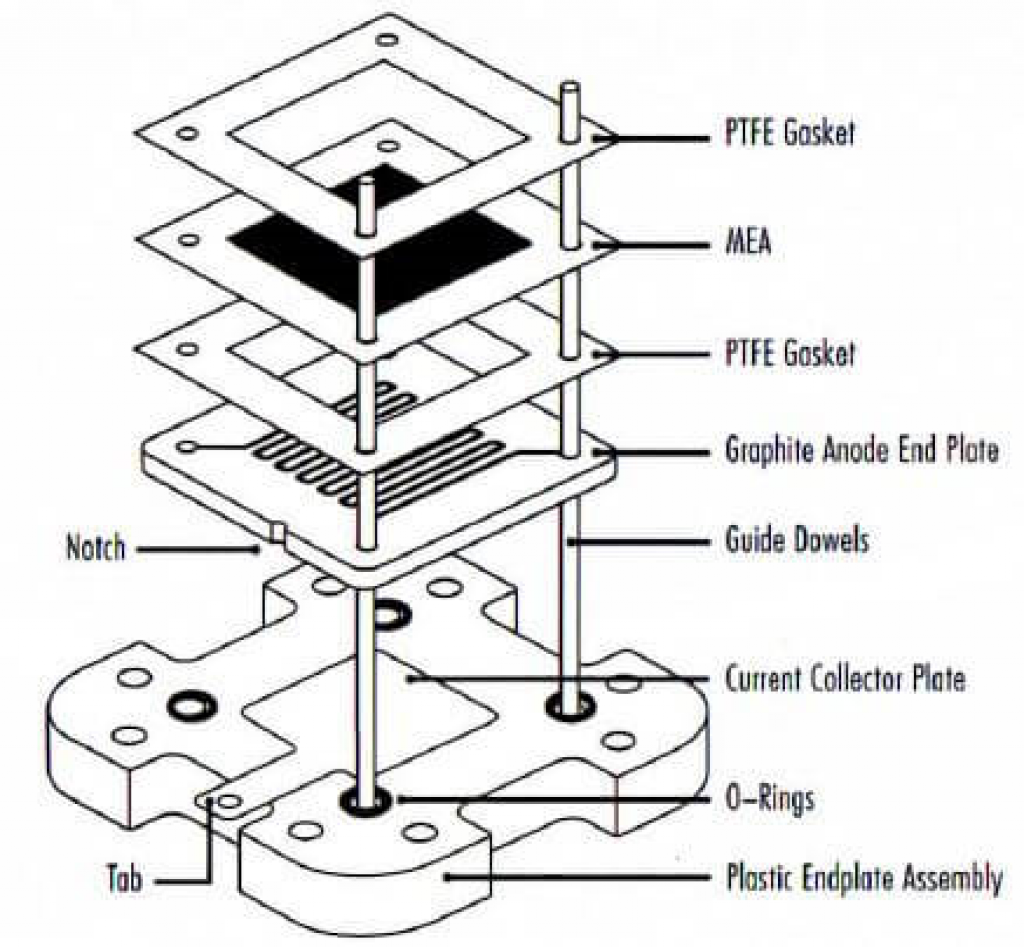
Source: fuelcellstore.com
Building your hydrogen fuel cell is relatively easy and only requires 5 steps that you can complete in 30 minutes:
Step 1: Assemble The First Cell
Time to build a multilayered sandwich of single fuel cells.
A 2ft x 2ft working table is ideal for making this small fuel cell.
You’ll start by putting the 4 guide dowels into the first endplate (anode side). Don’t forget to include their o-rings to prevent gas leakage.
Then bring in the first graphite bipolar flow plate. Make sure the flow channels are directed toward the MEA.
After that, insert the first gasket followed by the MEA, then put in the second gasket to perfectly sandwich the MEA.
There you have it — you’ve just assembled your first fuel cell!
Step 2: Stack The 20 Fuel Cells
Now you need to add 19 more fuel cells.
Follow the same process described in Step 1. Don’t forget to insert each layer into the guide dowels.
Conclude the stack with the last end plate. Once you’ve finished, tighten the guide dowels with a torque between 8-10 lbs.
Your fuel cell should look like this:

Step 3: Connect The DC Converter
The polarity of your DIY fuel cell is as follows: the anode is the negative pole (with the hydrogen inlet), and the cathode is positive.
A DC-to-DC converter will help stabilize your fuel cell’s voltage output to a steady 12V. This output is perfect for DC appliances or battery charging.
Make sure to respect the polarity while connecting the DC converter (+ with + and – with -).
Step 4: Connect Your H2 tank
Supplying hydrogen to your fuel cell is the final step!
Connect your hydrogen canister to the hydrogen inlet of the fuel cell via the PVC tube.
You may need a pressure regulator at the end of your hydrogen canister.
Step 5: Test Your Fuel Cell
As soon as you supply hydrogen to the fuel cell, it will produce electricity.
Use a multimeter to measure the voltage of each cell. To do this, connect the positive electrode of the meter to the cathode and move the negative electrode to each bipolar plate.
Finally, measure the voltage of the stack at the current collectors (anode and cathode). You should see around 12V for the fuel cell voltage and around 0.6V for every cell.
Customize Your DIY Hydrogen Fuel Cell
Your fuel cell is customizable! Here are three ways to increase its power output:
- Add extra cells to the stacks — this will increase the voltage
- Try out MEAs with higher platinum load to boost the efficiency
- Use larger MEAs — this will increase the Amps.
Please note: that at higher power (>50W), you will need extra equipment, such as a cooling device, to maintain the fuel cell below 80°C and avoid the MEA from drying.
How Does A Hydrogen Fuel Cell Work?
A hydrogen fuel cell working principle is relatively easy to grasp. You may even find yourself being transported back to high school chemistry class.
A hydrogen fuel cell is an electrochemical device that converts chemicals (H2 and O2) into electricity. It takes advantage of the reaction between hydrogen and oxygen catalyzed by Platinum (Pt).
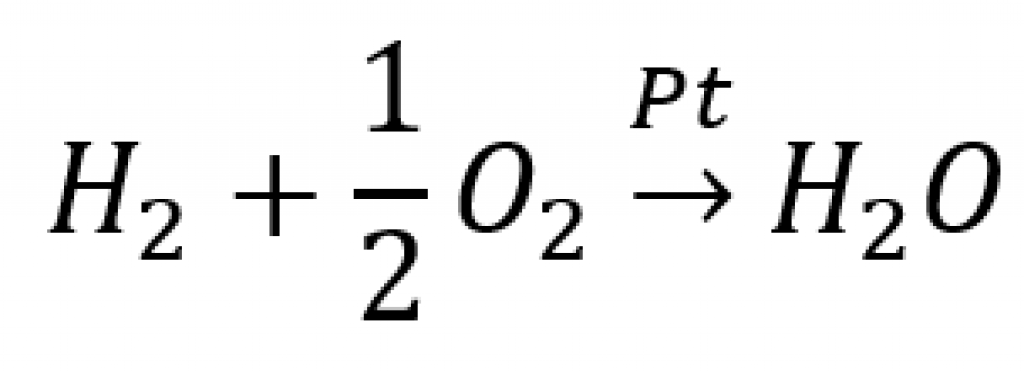
The heart of a hydrogen fuel cell is a cell with two electrodes: cathode and anode. Here, two reactions co-occur:
At the anode, hydrogen is oxidized to form two protons (H+) and two electrons (e–).

At the cathode, protons and electrons combine with oxygen to form water.

This article focuses on PEM (Proton Exchange Membrane) hydrogen fuel cells.
As depicted in the figure below, the two electrodes are separated by a membrane (polymer electrolyte) that allows the flow of protons (H+) from one electrode to another while the electrons (e–) travel outside the cell to drive a load.
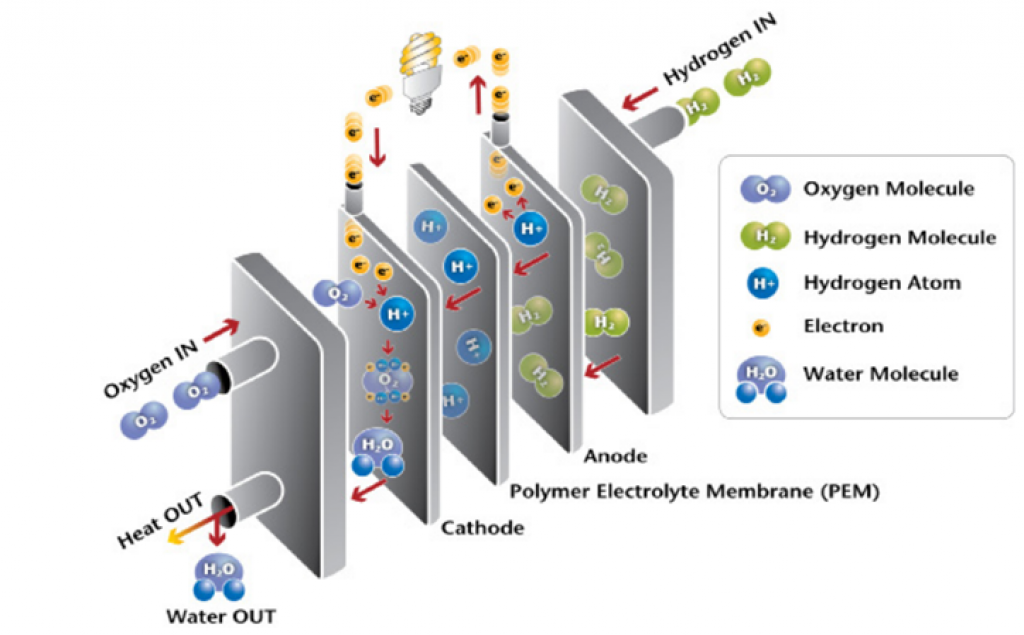
Source: U.S. Department of Energy
Hydrogen Fuel Cell Operation In 7 Steps
- Hydrogen gas (H2) enters the fuel cell at the anode
- The hydrogen reaction is catalyzed by platinum at the anode
- Electrons flow out of the cell
- Protons (H+) diffuse toward the cathode through the Polymer Electrolyte Membrane (PEM)
- Oxygen (O2) from the air is absorbed in the cathode through a Gas Diffusion Layer (GDL)
- Oxygen and protons react at the cathode to produce water
- Water and heat are evacuated through a bipolar plate at the cathode
Before Building A DIY Hydrogen Fuel Cell
Fuel cells are relatively new systems; therefore, it is essential to understand some of their specificities before building your hydrogen generator.
DIY Hydrogen Fuel cell Stack: Voltage And Current Output
The output voltage of a single fuel cell is usually in the range of 0.6V-0.7V (at nominal power). The output current depends on the surface of the active electrode (the one loaded with platinum catalyst), usually around 0.1A/cm2.
Let’s do the math for a single fuel cell with an active electrode surface of 10cm2:
10cm2 x 0.1A/cm2 x 0.7V= 0.7 Watt.
That’s the power of a single fuel cell.
For the standard voltage batteries used, you must stack 20 single cells connected in series (20*0.7V=14V) must be built to reach 12V.

Source: fuelcellstore.com
Membrane-Electrode Assembly (MEA) — The Heart Of The Fuel Cell
The MEA is the core component of any hydrogen fuel cell. It is loaded with catalysts (Platinum) and electrolytes (membrane), enabling the fuel cell’s electrochemical reactions.
As depicted below, it consists of:
- A Polymer Electrolyte Membrane — an electrolyte that allows the electrons to pass through;
- Two catalyst layers boost the electrochemical reaction;
- Two Gas Diffusion Layers (GDL) diffuse the gas; and
- Sealing material.
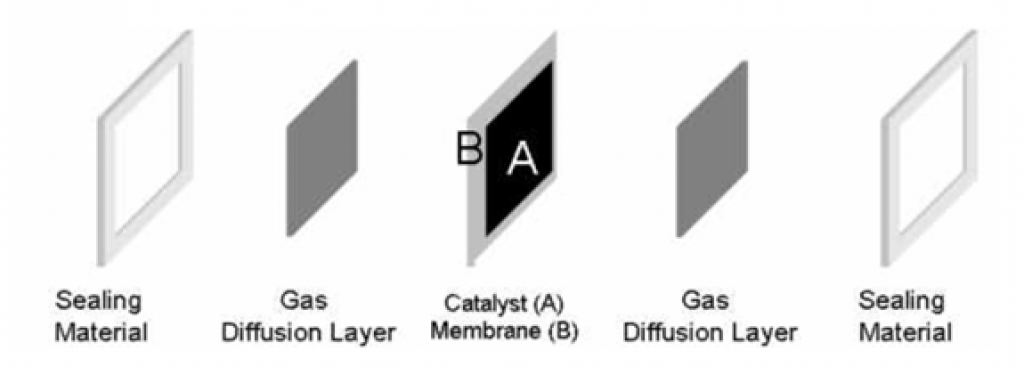
Source: fuelcellstore.com
Please note: advanced builders can make their own MEA, but some steps involve handling chemicals. As such, we recommend purchasing a ready-made MEA for the first build.
What Can You Power With A DIY Hydrogen Fuel Cell?
DIY fuel cells can power small electronic devices like mobile phones, tablets, and laptops. Their maximum continuous output power is around 60W.
DIY fuel cells have several advantages:
- Compact size
- Silent
- Pure water by-product
- Reliable and durable
As a drawback, DIY fuel cells are limited in their power output because of the heat they generate.
High temperatures (>150°F) would dry the MEA and degrade the cell. Installing a cooling system is costly and requires more engineering; it is reserved for professionals.
Final Thoughts
Hydrogen technologies promise to solve the fossil fuel crisis and cut down our CO2 emissions. Yet, many technical issues need to be addressed for mass adoption.
Nevertheless, fuel cell technology is ready to power the smallest electronic devices to the largest buildings.
In this article, we discussed building a 14W fuel cell for an overall cost of $ 1,100. Given its low power, this is still quite expensive, but this model is easily customizable by modifying the MEA or increasing the number of cells.
Producing electricity from air and hydrogen is fascinating, and assembling your own DIY fuel cell is a pioneer experience.
After this first build, you’ll be ready to make more powerful models requiring a cooling system and gas humidification processes.










Most informative article. I wish I could buy a fuel cell, but the mentioned price is astronomical for a lot of people. If a green and sustainable climate is what people are after, the cost of a fuel cell that can generate 14W would need to be less then the price of a 14W solar panel, I guess… Until that day, fossil fuels rule the world.
Thanks for your appreciation. With new technologies, anything can happen. Even significant price drops. Look back at solar panel price .In the early ’00s, it was 2000% (20x) more expensive!